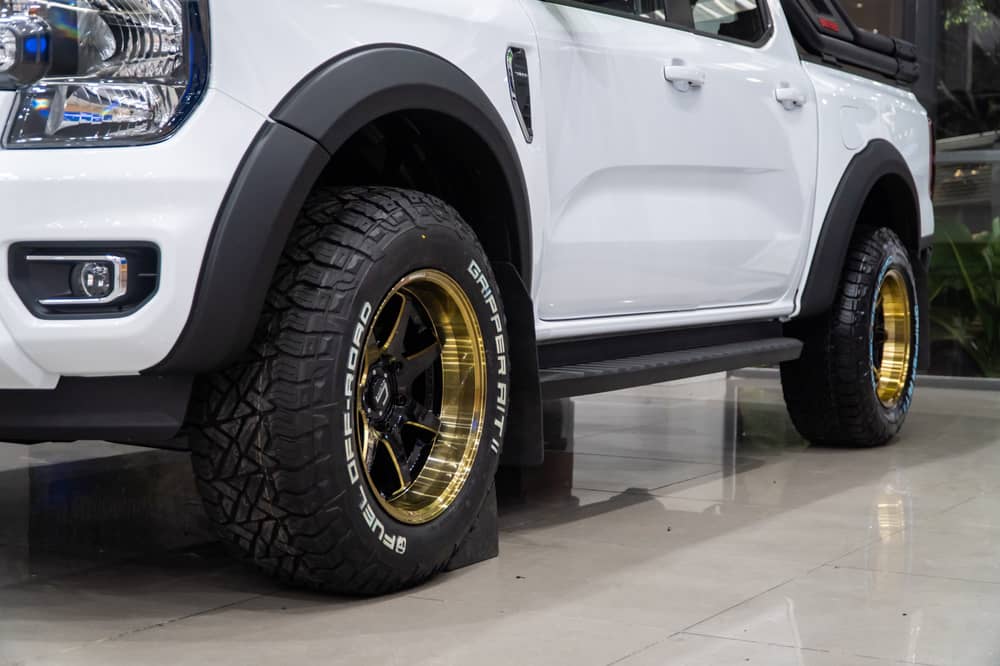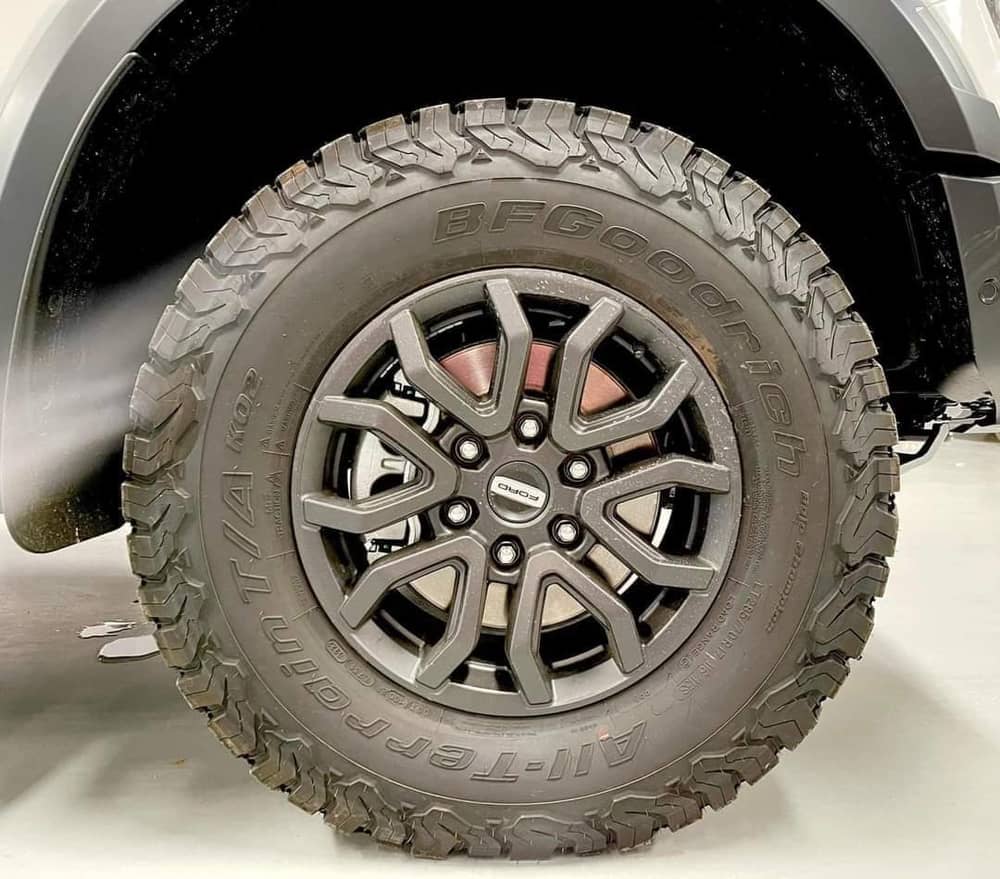Certain vehicles, tractors, and agricultural equipment have rear wheels that are larger than front wheels. This design decision is primarily motivated by particular functional requirements and performance factors. Do you know why rear wheels bigger than front?
Increased grip, weight carrying capability, and stability are just a few benefits provided by the larger rear wheels. Better weight distribution and enhanced traction on rocky terrain are made possible by the larger surface area of the rear wheels.
Additionally, this structure helps to more effectively manage the strains and forces brought on by towing large loads, thus extending the lifespan of the vehicle. We’ll now dive into and discover the causes of the larger rear wheels than front ones.
Reasons For Rear Wheels Bigger Than Front?

There are a number of practical and performance-related reasons why certain vehicles have larger rear wheels than front wheels. We listed some reasons below:
Weight Distribution
Having larger rear wheels is necessary to more evenly distribute weight, which is one of the main justifications. The possibility of uneven wear and tear is decreased due to the more level weight distribution made possible by the rear wheels’ bigger surface area. Greater stability is also a result of the weight being distributed evenly, particularly when negotiating treacherous terrain or hauling heavy objects.
Traction & Balance
Another crucial element influencing the use of larger rear wheels is traction. The contact patch between the ground and the larger rear wheels is increased. This increased surface area enhances the vehicle’s grip and reduces its propensity to slide, especially on slick or uneven surfaces. Applications where sustaining forward momentum is vital require this improved traction.
Additionally, having huge rear wheels keeps the car balanced. In order to reduce the power generated by the tangential force of the wheel, the rear wheels must have grip or traction. Excellent response and sensitivity to the steering wheel are needed for the front wheels. Therefore, having wide, massive wheels on the back is preferable for good traction and handling, whilst having slightly narrower front wheels makes it simpler to turn the vehicle.
Transmission and Torque Delivery
The larger rear wheels are also essential for delivering torque and transferring power. The weight distribution is prone to favoring the front axle in cars with an engine at the front. The use of larger rear wheels, which provide more leverage and support at the back, helps balance this distribution. Power is transferred to the ground more efficiently as a result of this. This design helps manage the strains brought on by the engine’s torque production while also optimizing acceleration.
In addition, having smaller wheels up front makes it easier for the car to make abrupt turns. It is obvious that larger front wheels make steering considerably more difficult and can cause the vehicle to jam.
Other Reason
The bigger rear wheels greatly increase ground clearance when driving off-road or in agricultural conditions. It aids in avoiding obstructions, avoiding harm to the undercarriage, and preserving constant performance on uneven terrain.
Larger rear wheels are an essential component of vehicle designs for heavy-duty operations, difficult terrain, and demanding load-carrying situations because of these benefits.
Typical Vehicles Have Bigger Rear Wheels than Front Wheels

Several different kinds of vehicles frequently have bigger rear wheels than front wheels, including:
Trucks and Commercial Vehicles
Many heavy-duty trucks and commercial vehicles have larger rear wheels. This configuration helps them manage the weight of cargo more effectively. This ensures balanced weight distribution and improved stability when carrying substantial loads over long distances.
Tractors
Larger rear wheels are frequently found on agricultural tractors, which improve traction and allow for improved mobility in fields with different topography. The larger rear wheels help to lessen soil compaction and maintain soil health while allowing the tractor to maneuver across difficult terrain.
Off-Road Vehicles
For better traction on rocky or uneven terrain, off-road trucks, SUVs, and all-terrain vehicles usually use larger rear wheels. With control and stability intact, this configuration improves their capacity to traverse difficult terrain.
Construction Equipment
To accommodate the significant weight of the machinery and materials that they transport, vehicles employed in construction and earthmoving frequently have larger rear wheels. They consist of bulldozers, backhoes, and loaders. This guarantees stability and effective weight distribution during demanding tasks.
Farm Equipment
To meet the demands of large-scale agricultural operations, farm machinery other than tractors, such as combines and sprayers, may have larger rear wheels. The traction and stability of these vehicles are improved when operating in diverse field scenarios.
Tow Trucks
Typically, tow trucks feature larger rear wheels because they are made to tow heavy automobiles. With this set up, they are better able to support the weight of the vehicles being towed, resulting in secure and effective towing operations.
Dump Trucks
Larger rear wheels are utilized by dump trucks, which are used to convey massive amounts of material, to manage the heavy loads they carry. They may function well even when fully loaded because to the improved traction and weight distribution.
Custom and Modified Vehicles
Some automobiles with custom automotive modifications use larger rear wheels for performance or aesthetic purposes.
These cars are designed to perform well in particular situations and tasks. Additionally, the choice of larger rear wheels greatly enhances their overall functionality and performance.
Should I Change The Rear Wheels For My Vehicle?
Your unique objectives will determine if you decide to switch to larger rear wheels for your vehicle. Before choosing, take into account the following factors:
Performance and Aesthetics
Larger rear wheels can give your automobile a more aggressive appearance and possibly improve performance. But keep in mind that changing the size of your wheels can also impact how well your car handles and how comfortable the ride is. Therefore, it’s essential to balance beauty with usefulness.
Tire Compatibility
The replacement tires must fit your vehicle without rubbing against the wheel wells or suspension parts. To fit the bigger wheels, you might need to modify your suspension or fender clearance.
Weight and Fuel Efficiency
Larger wheels and tires can make your car heavier, which might affect its handling and fuel economy. You must decide if the trade-offs in fuel efficiency and handling qualities are worthwhile given the potential performance advantages.
Cost
The cost of upgrading to larger rear wheels can be high. Spending money on new tires, possible suspension modifications, and any alignment adjustments in addition to the price of the wheels themselves is necessary.
Legal and Safety Considerations
The legality and safety of your car may be impacted by switching to larger wheels. Make that the new wheel and tire combination complies with local laws. Particularly, it won’t put your car’s general safety.
Expert Opinion
Consider whether larger rear wheels are appropriate for your particular vehicle and driving style by consulting with experts.
Driving Conditions
Take into account the type of driving you perform frequently. Larger wheels may not be required or viable if your car is a daily driver used for commuting. On the other side, larger wheels can be more enticing if you’re interested in track performance or have specific performance goals.
The choice to switch to bigger rear wheels should ultimately be well-researched and founded on a careful evaluation of all these aspects. You shouldn’t make the alteration if you’re unsure of how it will affect your car’s performance, handling, and safety.
Read More: Are Motegi Wheels Good?
Final Thoughts
In conclusion, larger rear wheels in some vehicles help to meet crucial needs for traction, stability, weight distribution, and power output. However, changing the size of the wheels can affect both handling and fuel economy. The choice to use larger rear wheels strikes a compromise between functionality, effectiveness, and appearance. We hope that the information in this post will be useful to you.
